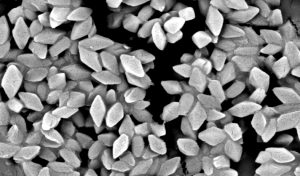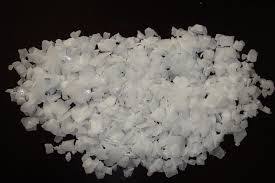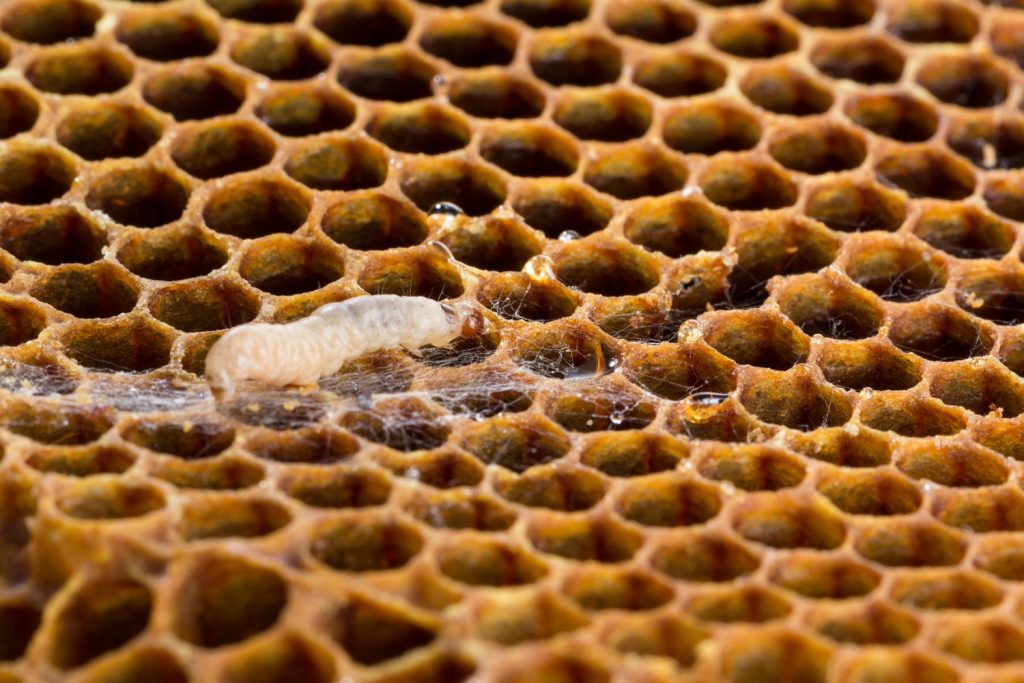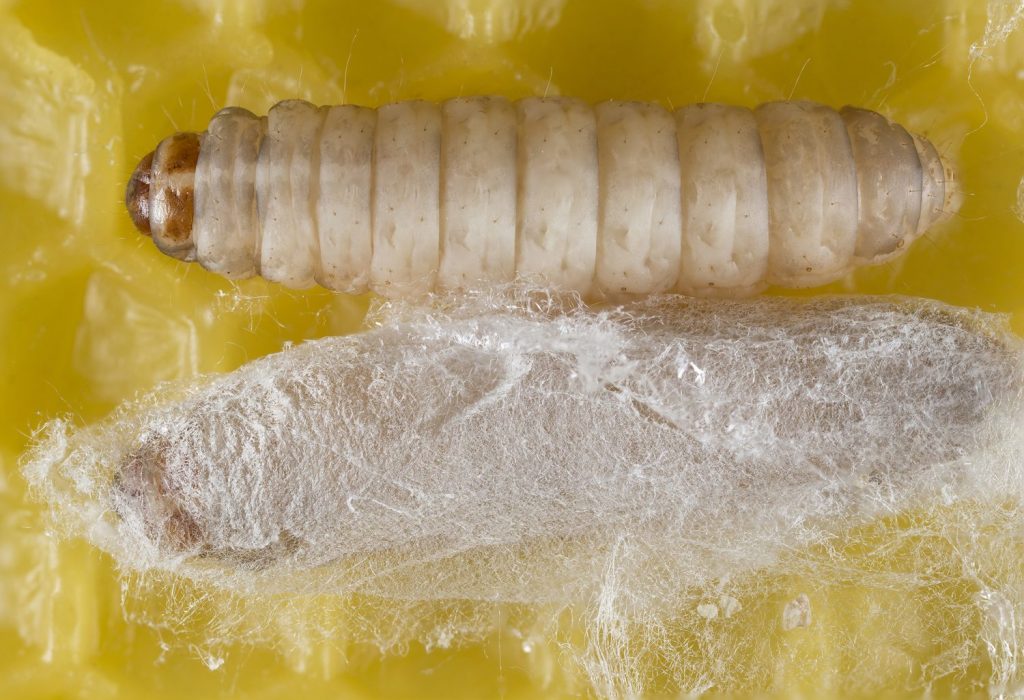If you purchase an independently reviewed item through our site, we earn an affiliate commission. Read our affiliate disclosure.
Beehives are vulnerable to numerous threats, including wax moths, which are pests that can harm honeybee colonies. There are two types of wax moths: the lesser wax moth and the greater wax moth. Both of these species can cause harm to beehives, with the greater wax moth being more common in areas where beekeeping is practiced and causing more damage than the lesser wax moth.
Wax moths are insects that prey on honeybee larvae. They enter the hive through upper entrances and spaces in the exterior of the hive. Wax moths can fly in cooler temperatures than bees. They mate and lay eggs in the night.
A wax moth infestation of an apiary or beehives is terrible news for beekeepers. Wax moth larvae prefer comb that has been used by brood and has contained pollen in the past. It is also important to note that the wax moth larvae can live on beeswax alone. They are thus a problem in honey supers as well.
The lifecycle of wax moths is heavily influenced by climatic conditions, especially temperatures. It starts with an adult wax moth laying fertile eggs in a beehive. The greater wax moth female lays up to 800 eggs while the lesser wax moth lays up to 300 eggs. After a few days, the eggs hatch and wax moth larvae emerge. At warm temperatures, the eggs can hatch in 3-5 days. In cold temperatures, it can take up to a month before the eggs hatch.
The larvae feed on beeswax and other material in the hive. It makes tunnels in honeycomb and releases a sticky web-like substance. Individual larvae then spins a cocoon around itself and enters the pupa stage. The wax moth pupa then molts into its adult stage. The pupa stage lasts 3-8 days in warm climates. In cold regions, it can take up to 2 months. Adult wax moths mate and the female then lays eggs in a beehive to repeat the cycle.
What are Wax Moths?
Wax moths are pests that harm honeybee colonies by laying eggs in beehives. These insects are able to enter the hive through upper entrances and exterior spaces, and they can fly in cooler temperatures than bees. They mate and lay eggs at night.
A wax moth infestation can be devastating for beekeepers, as the larvae of these pests prefer comb that has previously been used by brood and contains pollen. They can also survive on beeswax alone, making them a problem in honey supers as well.
The lifecycle of wax moths is heavily influenced by the climate, particularly temperature. It begins with an adult wax moth laying eggs in a beehive. The female greater wax moth can lay up to 800 eggs, while the female lesser wax moth can lay up to 300 eggs. After a few days, the eggs hatch and the larvae emerge. In warm temperatures, the eggs can hatch within 3-5 days, but it can take up to a month in cold temperatures.
The larvae feed on beeswax and other materials within the hive, creating tunnels and secreting a sticky substance. They spin cocoons around themselves and enter the pupal stage, eventually molting into adult wax moths. The pupal stage lasts 3-8 days in warm climates, but can take up to 2 months in cold regions. The adult wax moths then mate and the female lays eggs in the beehive to begin the cycle anew.”
Things to note:
- Wax moth larvae take around 19 days to develop into the pupa stage in warm climates. In cold areas, it can take up to 5 months.
- Adult wax moths only feed on liquids for their entire lifetime. Rotting fruit, nectar from flowers and pollen are favorite foods for adult wax moths.
- Adult wax moth males have a lifespan of 21 days. Females live for 12 days. The males use a combination of ultrasound signals and pheromones to attract females.
Symptoms of a Larger Problem
A wax moth infestation can indicate that there is a deeper issue impacting the health and strength of the honeybee colony. In order to effectively combat and prevent future infestations, it is important to identify and address any underlying problems within the beehive or colony. The sooner you take action against the infestation, the more successful your efforts will likely be.
There are various methods available for preventing wax moth infestations and removing them from beehives, as will be discussed in this article.
How do Wax Moths Affect Beehives?
Wax moths lay eggs in spaces and cracks unreachable by bees. When the eggs hatch, the wax moth larvae burrows through brood comb. They eat beeswax and honeybee larvae cocoons left behind when the bee larvae matures into an adult bee. The moth larvae also consume bee feces and bee cocoon silk. Furthermore, wax moth larvae release a sticky substance that bees cannot remove from the comb.
An even worse effect of the sticky substance that wax moth larvae secrete, is trapping adult bees in their cells. The bees become unable to leave their cells and die in place. These adult bees are later removed by worker bees. This has the general effect of lowering the adult bee population in the honeybee colony.
Ultimately, the wax moth larvae makes brood comb unusable by bees. The moths cause a reduction in the entire population of the honeybee colony. The colony gets weakened and vulnerable to other pests, parasites and predators.
The larvae of wax moths are very mobile. They may move from one hive to a next one in some cases. Older wax moth larvae are grayish in color and can be as long as 28mm. The larvae eat away at the wooden surfaces of the beehive in a wavy pattern to create a cocooning space. This causes the structural integrity of the hive to deteriorate. The larval stage of the wax moth lasts approximately 19 days in warm weather.
Wax Moth Control in Stored Supers
Stored honey supers may attract wax moths. The moths lay eggs in the supers and their larvae feed on the beeswax in the supers. This damages the stored comb in the supers as well as the wood used to make the super boxes. Wax moth control in supers is done by freezing and applying a Bacillus Thuringiensis (Bt) solution, ParadiChloroBenzene crystals or Para-Moth.
Using Bacillus Thuringiensis (Bt)

Freezing frames of honey supers before final storage kills eggs and larvae of wax moths. The box can then be treated using a solution of Bacillus Thuringiensis to prevent later infestation by wax moths.
The Bacillus Thuringiensis kills larvae of wax moths. It does not affect adults much and has no known effect on their eggs. The larvae are the destructive stage of wax moths, and killing larvae is enough to protect stored honey supers.
Using Paradichlorobenzene

Beekeepers may also use Paradichlorobenzene crystals to kill moths and their larvae. The crystals are placed in the stored honey super boxes. A newspaper or other light material can be used to hold the crystals in the super boxes. Airing stored super boxes with Paradichlorobenzene is necessary before re-stacking them onto your beehives.
Using Para-Moth

Para-Moth is a commercially sold powder product for wax moth control in stored supers. It is manufactured by Mann Lake. Six tablespoons of the Para-Moth solution are placed on a paper plate in the middle of stacked beehive boxes. Each stack is recommended to be five deep beehive boxes or six medium sized beehive boxes. The stack is covered using a tarp or other appropriate weatherproof cover. You should air the beehive boxes before use, after you’ve taken them out of storage.
Preventative Measures
Wax moths love dark spaces. Storing your honey supers where light enters them helps to prevent wax moths from making a home in them. You could also wrap the boxes with clear paper as an additional measure to keep out wax moths. Storing honey super boxes in outside sheds where they will freeze in winter is very effective for wax moth control in stored supers.
How to Get Rid of Wax Moths in Beehives
Freezing and burning are two sure ways to clear wax moths from your beehive once they have infested it. Both methods are effective and easy to carry out. Wax moth eggs and larvae cannot survive extremely cold temperatures.
In your beehive inspection, look out for signs of wax moth infestation. This involves checking brood comb for wax moth larvae, the sticky webbing they leave behind, burrows and tunnels in wax, and dark droppings at the bottom of the hive. If you are using a screened bottom board, check for dark wax moth larvae droppings under the hive.
Remove infested brood frames from the beehive immediately. Put the frames in a plastic bag and freeze them. Five hours in the freezer are enough to kill all wax moth larvae. As a precautionary move, you may leave the frames in the freezer for up to two days. Make sure your freezer temperature is at or below 20º Fahrenheit (-6.67º Celsius).
After freezing the frames, use a knife to scrape fecal matter and damaged comb from the beehive frames. Using a pair of rubber gloves, remove any wax worms and webbing that may be on the comb or frames. You should then inspect the hive for further infestation before putting the brood frames back in the beehive.
With heavy wax moth infestations, it is better to burn the affected comb. Remove the affected comb with wax moth larvae in it and burn it some distance away from the hive. You may reuse the frames if they pass visual inspection for moth eggs and larvae.
How to Prevent Wax Moths in Beehives
The size of beehive you have and the size of the honeybee colony occupying it are critical factors in wax moth prevention and control. For small honey bee colonies, it is advised that beekeepers remove some boxes. This leaves just the right amount of space that bees can regularly and effectively guard. Too much space leaves some areas of the beehive unwatched by bees. Wax moths then find easy life inside the beehive. As your honeybee colony gains strength, you may add more boxes as appropriate.
The practice of removing honey supers from beehives in winter is useful to prevent bees feeding on the honey. It also leaves less space for bees to guard. Remove honey supers late in winter and store them outside to freeze over if possible.
Preventing wax moth infestations of your beehives is important. It avoids losses suffered even with minor wax moth infestations. Proper hive hygiene is the first step in preventing wax moth infestations. Remove wax and comb that may be lying around in hives. You should also have only the frames that bees are using in a beehive. The rest should be kept frozen or in protective bags until they are needed for use.
Methods of Prevention
Wax moths can spread from one beehive to the entire apiary in a short period of time. Beekeepers should use one or a combination of methods to keep wax moths in check. These include:
1. Keeping a strong honeybee colony
Strong honeybee colonies fight wax moth infestations easily. They kill the wax moth as it enters the hive. They also kill and remove wax moth larvae from the hive.
2. Use of bottom entrances only
Beehives with entrances and holes in the upper sections are prone to wax moth infestation. Sealing upper entrances and making sure lids on beehives are properly in place prevents wax moths from entering the hive. If you must have top entrances or ventilation holes on your beehive, keep them screened to prevent wax moths entering the hive.
3. Use of wax moth traps
Wax moths can be lured to traps specifically set out for them. The trap mimics beehive smells that draw wax moths. The moths then enter the trap and get drowned in it. A wax moth trap is effective to protect beehives and stored honey supers from infestation. A quick wax moth DIY trap is outlined below.
4. Treatment with Bacillus Thuringiensis (Bt)
Treat your beehive boxes with a Bt solution as a preventive measure. In the absence of an infestation, this is passive protection. The bacteria kill larvae of wax moths once ingested.
5. Use foundationless frames
Having foundation on frames that may be unused and unguarded by bees leaves the honeycomb prone to wax moth larvae. Foundationless beehive frames leave wax moth larvae with fewer honeycombs to occupy.
6. Using crystals of Paradichlorobenzene
Place crystals of Paradichlorobenzene in your stored honey supers. They kill adult moths and deter them from entering the boxes. Wax moths may lay eggs on the outer surface of stored honey super boxes. The eggs hatch and the larvae enter the boxes through tunnels they dig in the wood. Paradichlorobenzene is effective against these larvae too. It is a great preventive measure taken with stored beehive boxes. Make sure to air the boxes for a day or two before using them again.
7. Freezing and rotating beehive frames
Periodic freezing of beehive frames and rotating them in use are effective against wax moths. Freezing kills wax moth larvae and eggs too. Beekeepers should also have extra beehive frames that they can rotate in the hive. You should freeze frames before storage, and store them in moth-proof bags.
8. Planting mint near beehives
Wax moths are repelled by mint. Planting a few plants near beehives in your apiary keeps the moths away from the area and your beehives. You may also leave some branches of mint among stored beehive boxes to repel wax moths.
How to Clean Beehives with Wax Moths
Heavy wax moth infestations require you to clean the beehive, thoroughly. After you have killed off the wax moths and their larvae, you have to remove residues they leave behind. In light infestations, remove the affected boxes from the hive together along with the affected frames.
- Use a hive tool to scrape wax, propolis and wax moth secretions to remove them from affected beehive boxes and frames.
- Clean the frames and beehive boxes with a solution of Clorox or bleach.
- Spray the frames and hive box with a Bacillus Thuringiensis. This is a preventive measure against future wax moth infestations.
- For heavy infestations, it may be necessary to take apart the beehive boxes. This gives you maximum access to spaces where wax moths may have laid eggs.
Can I Extract Honey from Frames with Wax Moths?
Honey super frames may get infested with wax moth larvae. This can happen while the frames are in the beehive or in storage. While it is possible to extract honey from these frames, the honey should NOT be sold or consumed by humans in any way. It is popular among beekeepers to uncap the frames and put them in a place where bees will eat up the honey. This is only done after freezing the frames to kill larvae and eggs of wax moths. The bees benefit from both the honey and beeswax.
How to Make a Wax Moth DIY Trap
A wax moth trap is very effective as a first line of defending your apiary from wax moth infestation. The trap is placed near your beehives.
Materials
To make the trap, you need:
- A 2-litre plastic bottle
- Water
- A drill
- Sugar
- Vinegar
- A banana peel
Steps
- Add 1 cup of water into the bottle.
- Add ½ cup of vinegar to the water, and 1 cup of sugar.
- Cut the banana peel into pieces or strips that can enter the bottle and drop the whole peel into the bottle.
- Shake the contents well to mix them up well.
- Wait a few days for the mixture to start fermenting.
- Once fermentation starts, drill a hole measuring 1-inch under the slope on the plastic bottle’s neck.
- Hang the bottle near your beehives. A nearby tree is a great location for your trap.
How the Trap Works
The fermenting mixture in your trap mimics the scent of a beehive. Any wax moth near your beehives will be drawn to the trap. The moths enter the trap through the hole drilled into the neck of the bottle and are unable to escape. The moths eventually drop into the mixture and get drowned. This type of trap also attracts and kills bald faced hornets and some yellow jacket wasps as a bonus.
Traps for moths and butterflies that are not specific for wax moths may come in handy when you do not have the resources to make your own wax moth trap. They are effective against a wide variety of moths and insects. The disadvantage of these traps is that they will entrap insects that you are not targeting. For beekeepers who care about nature and ecological balance, this is not an ideal outcome even as they aim to reduce wax moth populations near and around their beehives.
Pro Tip: To increase the efficiency of your wax moth trap, use a light source near the trap. Light attracts moths and insects in the dark. With a light, you catch more wax moths.
Commercial Wax Moth Traps
A commercially sold version of this DIY wax moth trap is available for purchase. It makes use of a better design of the plastic bottles and the same bait recipe. The trap is effective and easy to use for both amateur and professional beekeepers. It comes with a top that makes hanging the trap easier than the DIY trap. Other commercial wax moth traps are also available and can easily be bought online.
Conclusion
Strong honeybee colonies are great at keeping the beehive free of wax moths. A honeybee’s colony strength is based on the number of adult bees in the colony. A healthy and active queen bee is important for maintenance of bee numbers inside the hive. Weak honeybee colonies can be strengthened by supplementary feeding and being allowed to have more brood boxes.
Wax moths are a part of the natural honeybee ecology. In the wild, wax moths are useful in cleaning up after bees. They eat the wax in absconded spaces occupied by bees. A fresh colony can then occupy the same space. In beekeeping however, wax moths cause losses in colony strength and honey yields. Beekeepers should take preventive measures to keep wax moths from infesting their apiaries. If the prevention does not work, it is important that the beekeeper knows how to treat wax moths in beehives. Use the information in this article to keep your beehives free of wax moths and your colonies strong and healthy.
References
- https://www.clemson.edu/extension/beekeepers/fact-sheets-publications/wax-moth-ipm-publication.html
- https://franklinbees.co.nz/wax-moth.php
- https://edis.ifas.ufl.edu/publication/AA141https://nationalbeeunit.com/index.cfm?pageid=207
- https://blythewoodbeecompany.com/blogs/news/the-beekeepers-guide-to-wax-moths-part-2
Do you have a wax moth infestation? Or have you successfully treated wax moths in beehives? Let us know in the comments below.
 BeeKeepClub Resources and Guides for Beekeepers
BeeKeepClub Resources and Guides for Beekeepers




A great article
Thanks so much for the advice. My hive has been infested in wax worms. This is my first year and I have watched for other type bugs but not these. Hive was great 3 weeks ago then I noticed mt bee population was slim. Tore apart the boxes and little worms everywhere. I’m hoping my bees will come back but do I need to start with a new box?
Hi Laurie, you are most welcome.
I’m sorry to hear about the terrible wax moth infestation you’ve had to deal with. You don’t need to buy a new box, but you should ensure that the beehive is thoroughly cleaned before starting over. You can read the following section of the article for more information: https://beekeepclub.com/how-to-treat-wax-moths-in-beehives/#how-to-clean-beehives-with-wax-moths
All my bees are gone and hive was destroyed! This was my first year… I’m so sad!! 2 hives destroyed!!!
I’m so, so sorry that this happened you. Do you have any hives that are unaffected?
Yes one small hive, it’s so sad to have lost the other hives and it happened within 14 days, I Love my bees
I’m sorry to hear that. Try to be extra precautious with your remaining hive. I wish you all the best.
Thank you… What can I do to protect this small hive, its winter now?
You can check out our articles on getting prepared for winter:
https://beekeepclub.com/getting-started-beekeeping/9-helpful-tips-beekeeping-winter/
https://beekeepclub.com/tips-for-beekeeping-in-cold-climates/
https://beekeepclub.com/how-to-insulate-a-beehive-for-winter/
Hope it helps!
Hi,
I understand why the tainted honey should never be sold, but if it tastes ok, why shouldn’t it be eaten by the beekeeper? Is it dangerous? Thanks
Hi Molly,
I can’t say for certain if it’ll have any negative effects on your health, but I would not advise it.
I just read about that on other sites (I just found worms on my bottom board). Most say it is not dangerous to eat worm infected honey but the feces could be an issue. Many say the worms themselves are actually nutritious. To avoid it, they say to cut out the comb with worms/feces before extraction. Other than webbing, is this obvious on the comb?
I personally would not eat anything that has been infested with worms, but that’s just me.
[…] few treatments being available for in-hive use. Para-dichlorobenzene (PDB) that is often used to control wax moths in empty stored comb is also effective against small hive beetles in stored comb and beehive […]
I’ve just discovered bad wax moth infestation in my hive which still has bees in it. If I change all the frames and clean the hive where do I put the bees while that’s being done?
Hello,
Do you have an additional or spare beehive? You can place the frames in there whilst its being done.
[…] Remove infested brood frames from the beehive immediately. Put the frames in a plastic bag and freeze them. Five hours in the freezer are enough to kill all wax moth larvae. As a precautionary move, you may leave the frames in the freezer for up to two days. via […]
[…] you can expect no yields whatsoever. You will also be risking the honeybees absconding the hive. Controlling the wax moths in the beehive will also be a difficult undertaking due to heavy infestation of the […]
Honeycomb in wall /was moth infestation
HELP…moving into house with issues, who fixes this? Exterminator came, sprayed in the exhaust, places small hole in wall with camera, beehive there, bees seem dead, lots of larva, worms and now 100s of moths in the house. Getting new exhaust, but who will break the soffit and clean the hive the correct way? Honey is everywhere up above the cabinets and leaking down. Between the cabinet and exhaust hood for weeks….gad lines run behind that wall. What can I do as a resident..besides swatting hundreds in the am and pm?? Who knew this happens in brooklyn ny!! Thank you!
Hello, I’m afraid that only an exterminator can assist with this.
I have a wax moth larvae infestation behind a bookcase in my lounge, against a doorway and on my gym flooring. I do not keep bees. This is the third time this has happened. Does anyone know why and what I can do to stop it happening again?
Hello, given that you do not keep bees, you may consider using pesticides or get a professional pest exterminator.